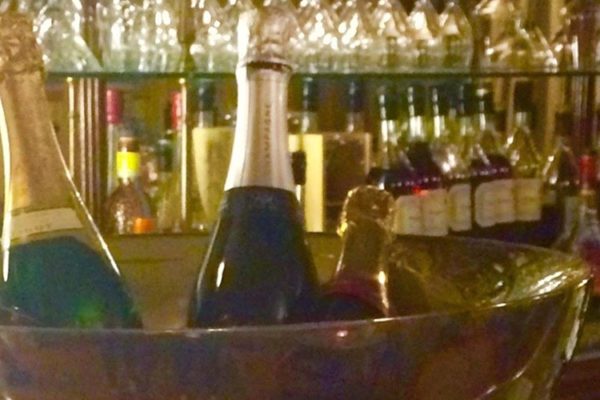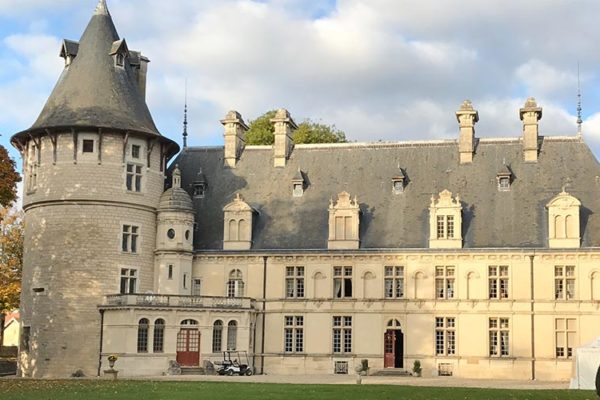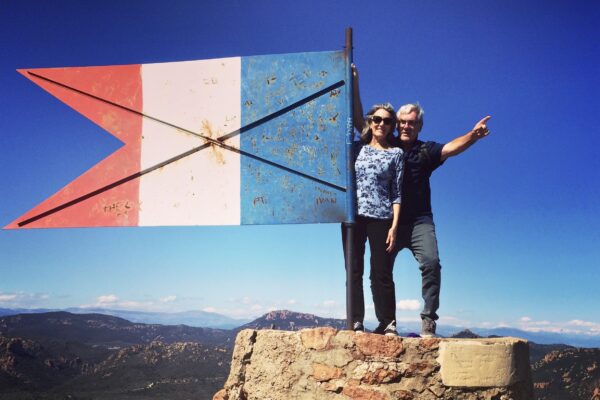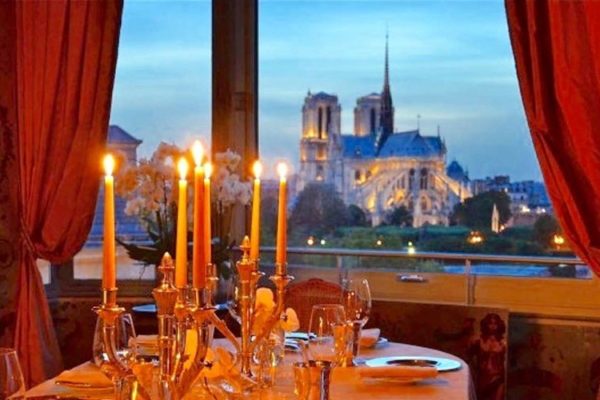Life in the Bubble with Bollinger, Salon & Selosse
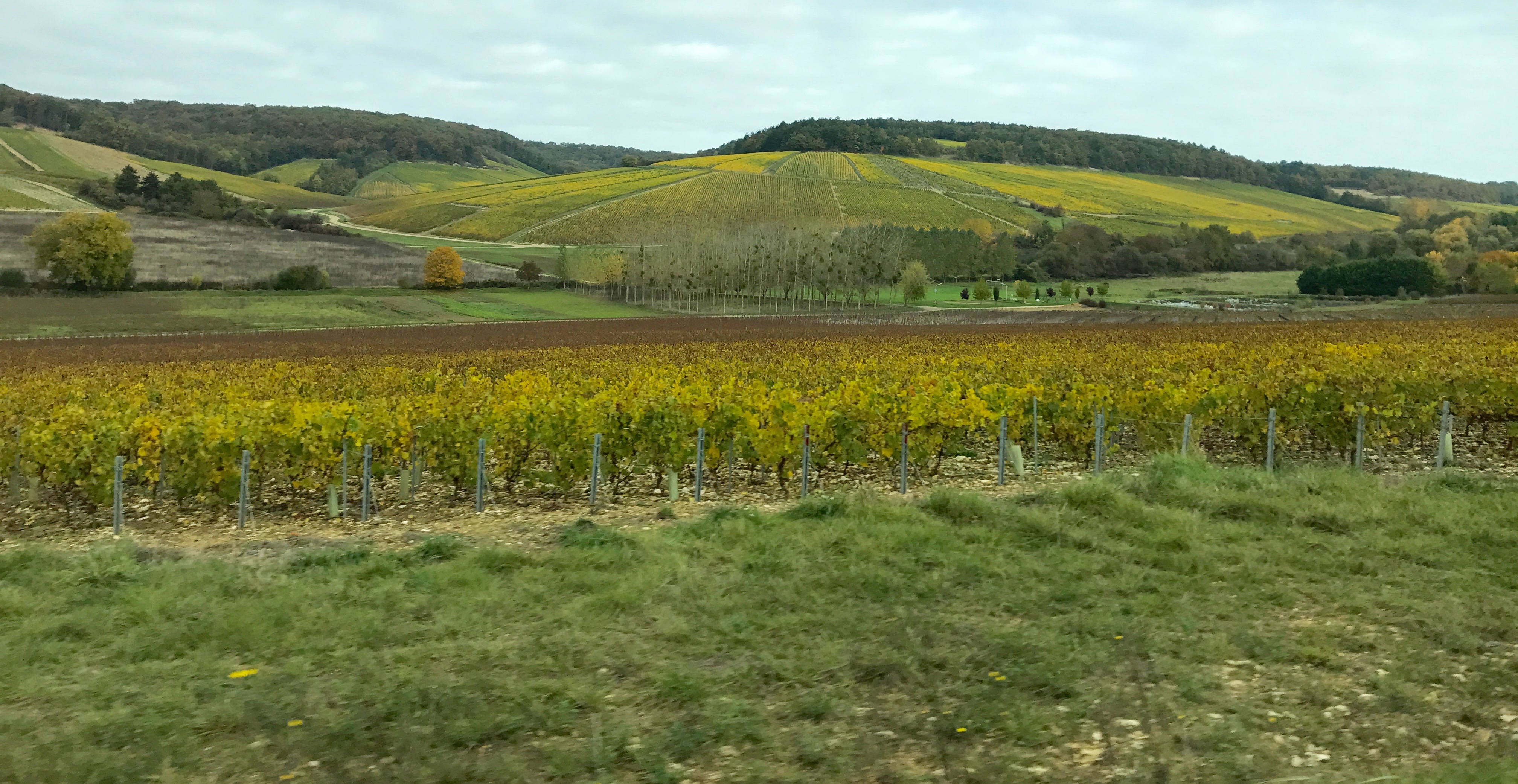
Rolling hills of Champagne, with vineyards of Chardonnay, Pinot Noir & Pinot Meunier.
by Michel Thibaut, owner of Michel Thibault Wine
photos by Marla Norman, Publisher TCO
By the 1900’s Champagne had become established as the most popular sparkling wine. Before then, most of France favored the easy drinking sparklers from the Loire Valley. Those “Crémants” – primarily made from Chenin Blanc – were the favorites of the French kings, while they vacationed in the Loire Chateaux, away (they thought) from the troubles in Paris…
Another interesting fact, is that Champagne is situated on the northernmost wine growing area of the world, with a latitude of 49 degrees north, which explains the seemingly lack of ripeness in the grapes and subsequent high level of acidity. A factor much to my personal liking!
While there are four-five main Champagne producing areas, three seem to matter the most. The Cote des Blancs is famed for fresh and refined Chardonnays, the Montagne de Reims Pinots Noirs offer weight, meaty aromas and good acidity, and the Vallee de la Marne produces the riper, fuller bodied wines, because of its southern exposure.
It’s commonly known that Champagne is produced from three grape varieties: Pinot Noir, Pinot Meunier and Chardonnay. But, that is true and false – there are actually four more varietals allowed in the make up of Champagne wines, but the other four – Pinot Blanc, Pinot Gris, Petit Meslier and Arbane – are rarely found these days, except in a few small houses.
White Champagnes are either made from Chardonnay only and are then called Blanc de Blancs (white made from white grapes) or they are called Blanc de Noirs (white made from red grapes, following a quick removal of the skins). Rosés, are either the result of added red wine or juice fermented in contact with the skins.
Most of the “ big” Champagne houses are located either in Reims, a city also known for its beautiful cathedral and the Chagall stained glass inside, or in Épernay, a smaller city located a half hour from Reims. There, properties such as Moët & Chandon, Veuve Clicquot, Pol Roger and Perrier Jouet, seem to own everything from entire street blocks to hotels!
On a recent tour of Champagne, I had the opportunity to visit Salon-Delamotte, Selosse and Bollinger:
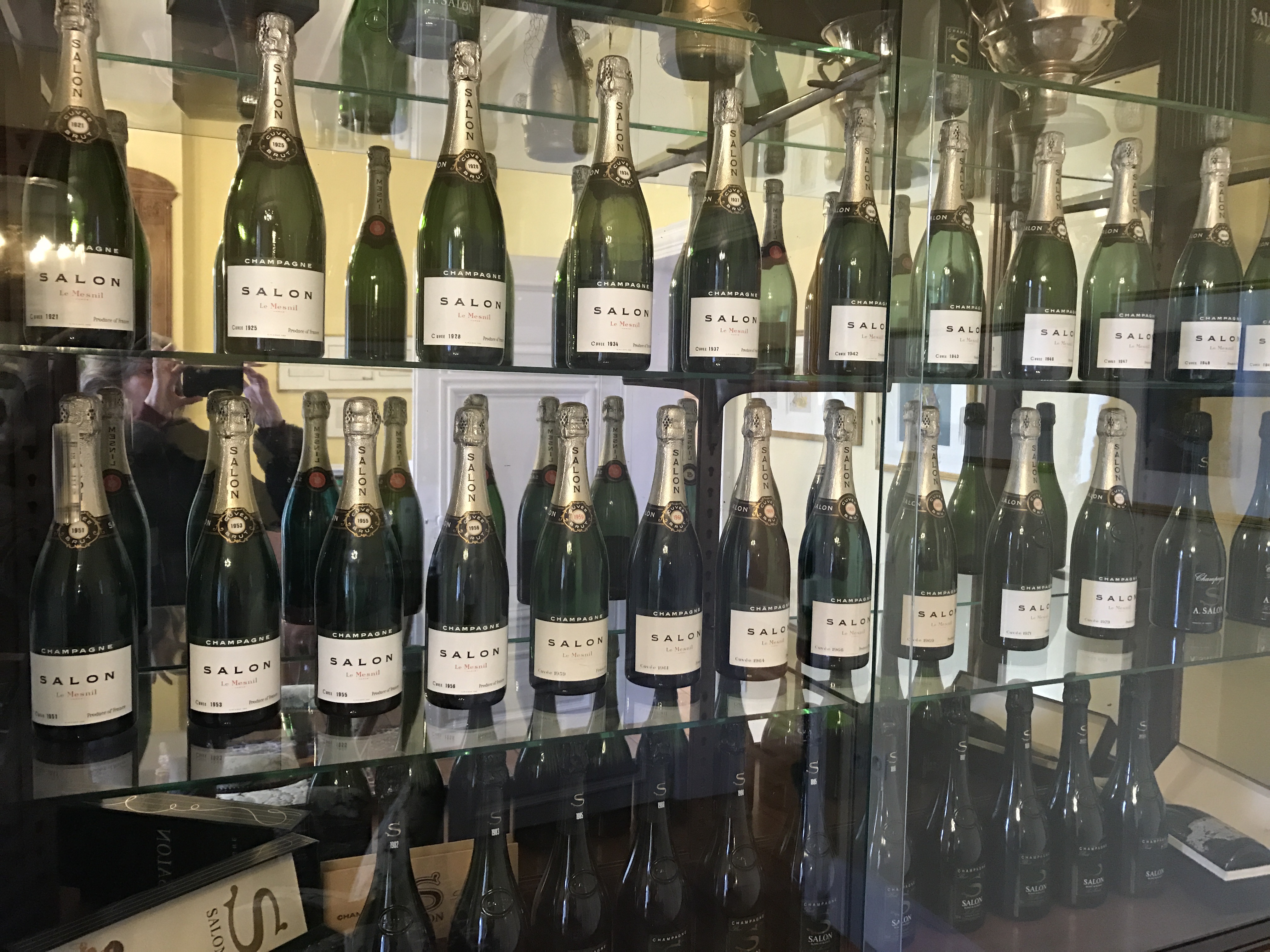
Something to dream of – many decades of Salon in a single collection.
SALON is quite amazing. Tiny plots adjacent to its neighbor DELAMOTTE (also owned by the Laurent Perrier group) produce Chardonnay only. Located in Mesnil-sur-Oger (highest rated vineyards called Grands Crus), the winery is tiny and all grapes are vinified at Laurent Perrier’s facility.
Salon is only released in vintage years and traditionally there have been three of those per decade! The rest of the wine generally goes into the Delamotte bottling.
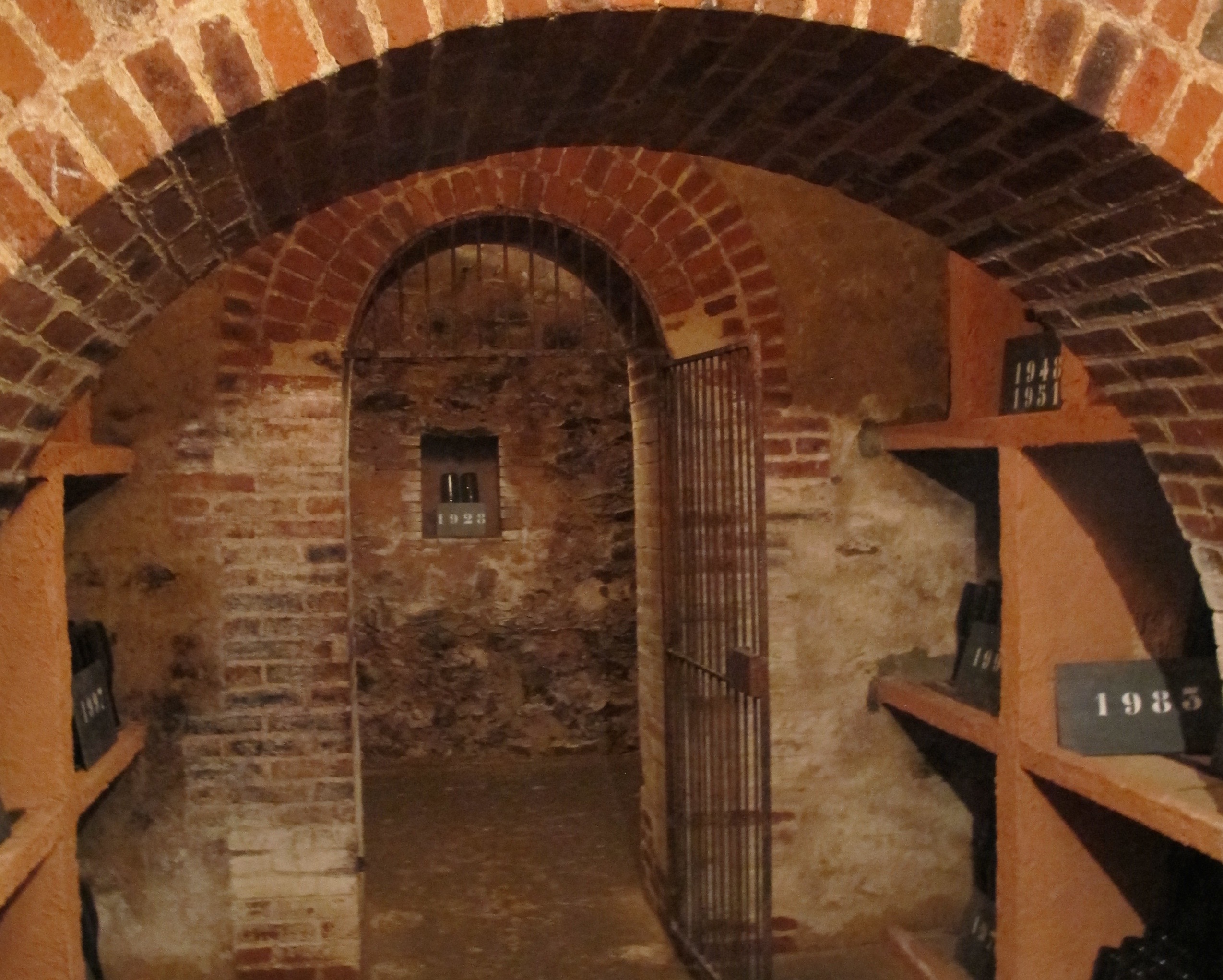
In the cellars of Salon, where the oldest bottle is a 1928. The owner, Laurent Perrier, has turned down all offers – some quite extraordinary – for these oldest bottles.
A lucky note though: There have been a string of good vintages in the first decade of the century – 2002, 2004, 2005, 2007 are all Salon vintages, with possibly more to come for this decade. The current available vintage is 2004, while the 2002 is known to be one the very best Champagnes ever made (worthy of a 100-points rating). Beware, though, as Salon produces only one wine, the price is high: $300 plus.
Salon’s style is traditional: I like the super clean taste of the wine with razor clean freshness, and secondary aromas of grilled breads and caramel. Like many houses do with their top wine, Salon does not release until at least 10, 11 or 12 years after initial harvest. The wine lasts forever and while tasting the 2004, I realized that it was way, way too young to drink. I actually thought that the Delamottes offered at the tasting showed incredibly well, particularly the 2007 vintage. Delamotte, is a brand that is under the radar, but worth so much more than many popular Champagnes!
BOLLINGER is located in Ay, near its sister winery, called AYALA. All vineyards are classified Grands Crus, again of the highest quality.
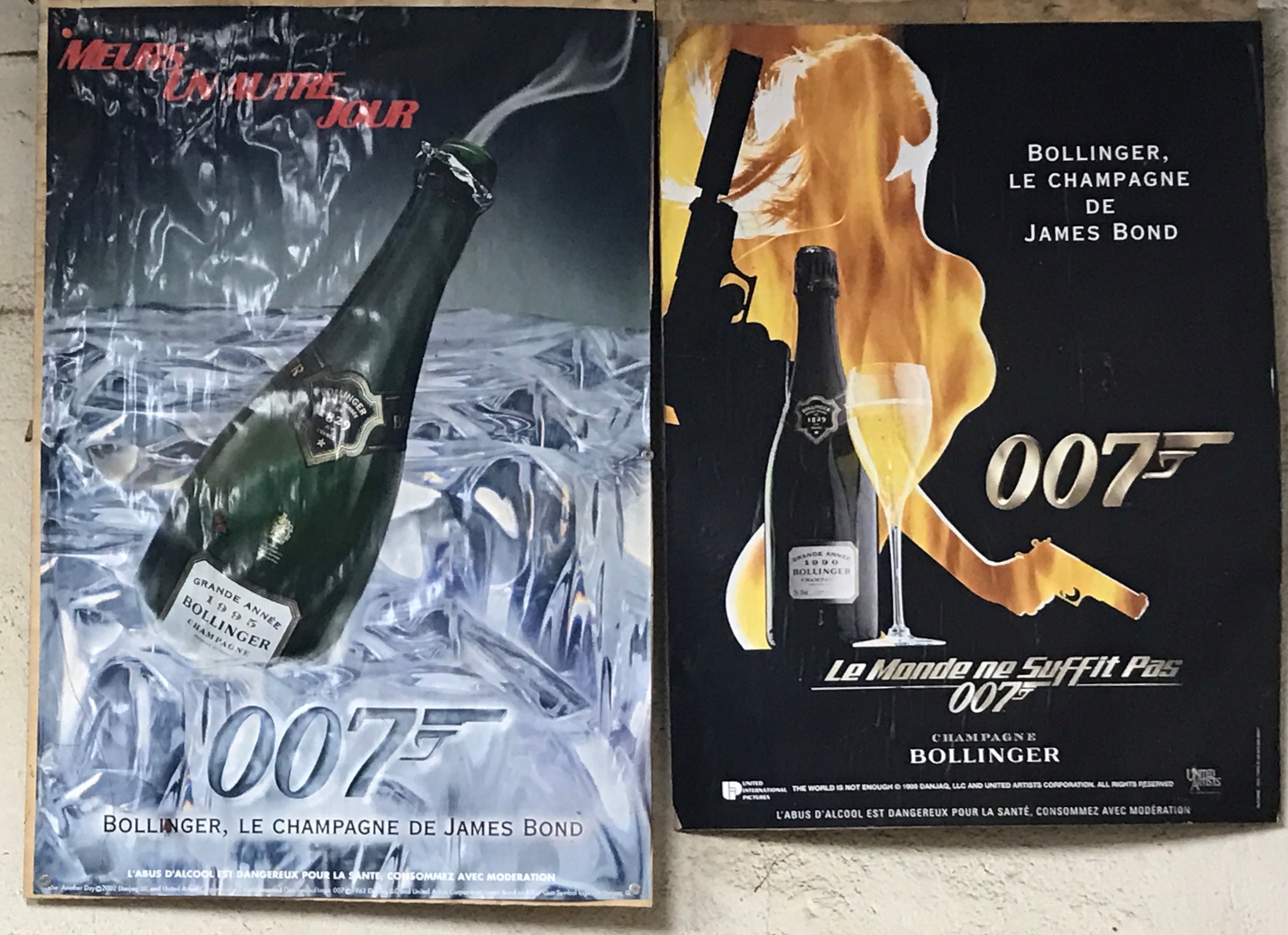
James Bond posters promoting 007’s favorite Champagne.
Bollinger is known to be the “James Bond” Champagne, after a friendship between the Bollinger family and Albert Broccoli, producer of the Bond films, grew into the latter’s offer to place Bollinger into 007’s movies.
More interesting – at least to Champagne lovers – is the fact that there is a Clos (walled property) near the Bollinger house where pre-phylloxera vines are still producing a Champagne of epic quality.
It is called Vieilles Vignes Françaises, costs well over a $1,000 per bottle and the very tiny production is always sold out before it is ever bottled.
One of the more pleasant of Bollinger’s selection is their Special Cuvée. This non-vintage, “bread & butter” wine is made from a blend of current and reserve wine, which is kept and aged in magnum bottles. What a treat to see these tens of thousands of magnums in the cellar, waiting to be blended into this wine! The Bollinger Special Cuvée is to me the best of all non-vintage wines. It offers huge complexity, and has amazingly beautiful longevity. Two minutes after your last sip, you still feel the focus and the energy of the wine. I enjoy many Champagnes, but for $50-$60, none do I find more pleasant.

Clos St. Jacques in Aÿ is one of the oldest vineyards in Champagne and still produces highly sought-after wine.
While at Bollinger, we also tasted the Rosé, which was nice, and the Grande Année, a very good, high-class vintage Champagne. But the finest was the RD (recently disgorged) which happened in our case, to be the 2002 vintage. I cannot praise the wine any more other than to say that it compared well to Salon.
SELOSSE is simply impossible to find. Only 60,000 bottles are produced annually and most are sold in high-end restaurants only. Anselme Selosse sells the Champagne in his gourmet restaurant, but you will have a hard time finding it anywhere else.
Anselme is definitely a man who has chosen his own path. While I translated his lecture for a group touring his cellar, I could not help but think that, were it 300 years ago, you would have found him writing poetry in a forest! Anselme believes he is the steward of the land he manages, and therefore, uses a hands-off approach to winemaking.
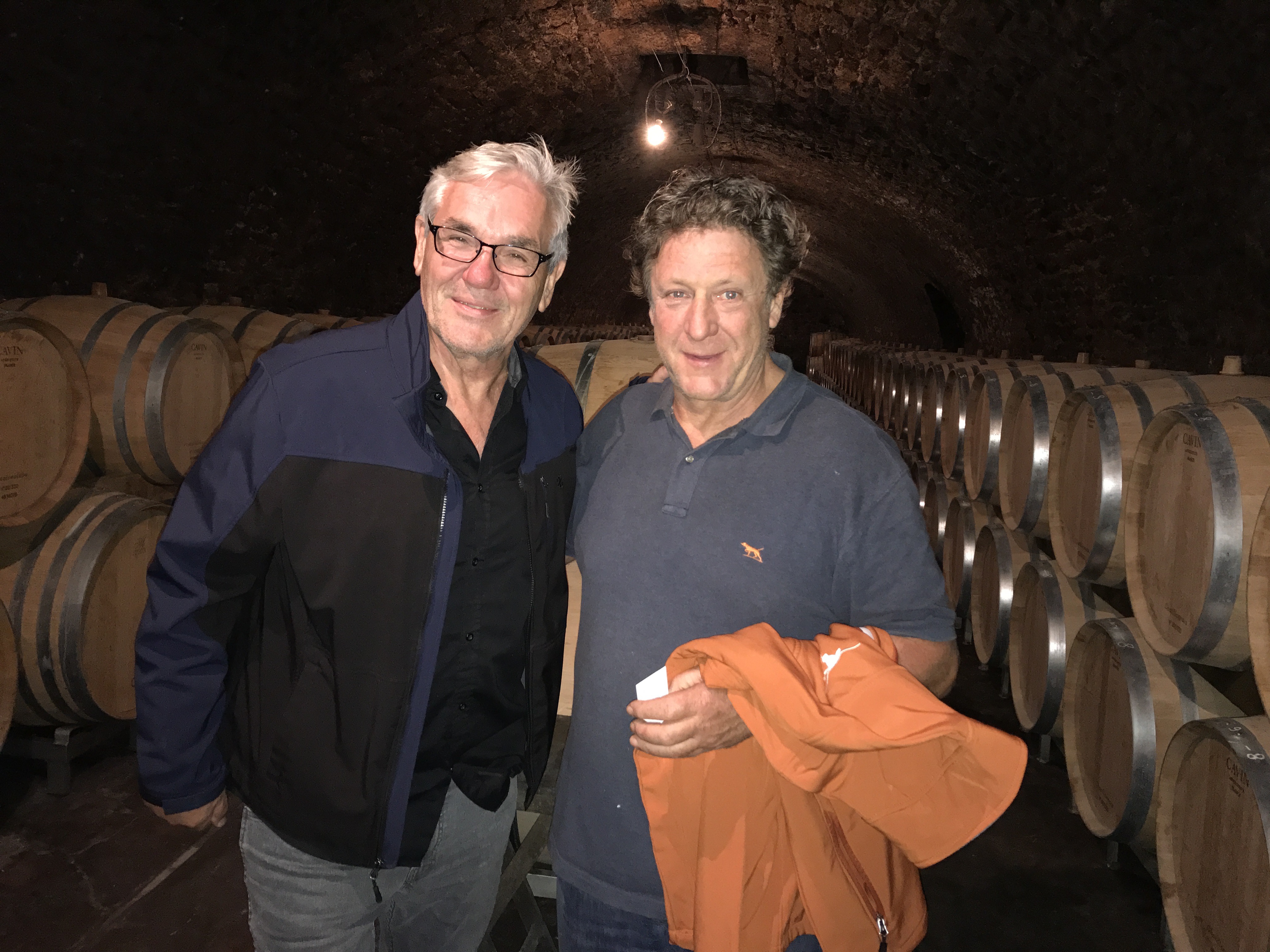
Michel Thibault with Anselme Selosse at Domaine Jacques- Selosse.
However, he is not opposed to experimenting with lots of different wines. In fact, one of the most amazing wines we drank that evening was a Palomino Sherry he had concocted. On the downside, just as it is with so many experiments, a few of his wines were uneven in quality. While his style can be controversial, he brings much to the Champagne region: honesty, a flair for experiences and respect for the land as well as a gregarious pleasure for the business of wine.
The villages of Champagne may seem small and quaint, but within the wine houses – or in the bubble – are artisans producing wines which provide incredible pleasure, flavors and spirit.
Long live Champagne!
Interested in some of the wines mentioned in this article? Visit Michel Thibault Wine to learn more or purchase.




